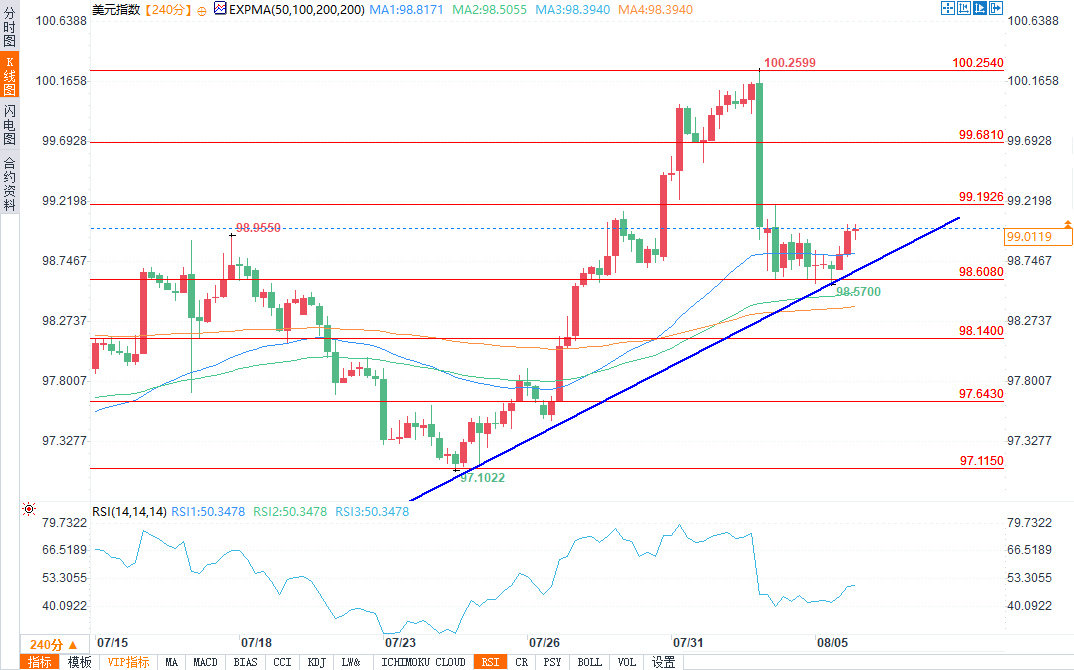US Dollar Forecast: Weak jobs data and political tensions weigh on the greenback
2025-08-05 18:32:14

Markets are now focused on the upcoming ISM Services PMI data and speeches from Federal Reserve voting members Susan Collins and Lisa Cook for further clarity on the dollar's trajectory.
Weak jobs data triggers dollar pullback
Last Friday's non-farm payrolls (NFP) report showed only 73,000 new jobs added in July, well below the expected 110,000 and significantly lower than the revised 147,000 in June. The unemployment rate rose to 4.2%, in line with expectations but indicating a cooling labor market. Meanwhile, the ISM manufacturing PMI fell to 48.0, marking the second consecutive month of contraction in the sector. These weak economic data heightened market expectations for more easing from the Federal Reserve, further pressuring the dollar.
Expectations of a Fed rate cut rise
Interest rate futures are pricing in an 84% probability of a 25 basis point rate cut in September, with the market pricing in as many as 60 basis points of total rate cuts by year-end. San Francisco Federal Reserve Bank President Mary Daly supported the shift, citing labor market slack and diminished inflation risks as reasons to begin easing policy.
In addition, Daly said that there may be more than two rate cuts in 2025, and upcoming speeches by Fed voting members Susan Collins and Lisa Cook may further influence market expectations.
Political turmoil and BRICS trade concerns add to uncertainty
The sudden resignation of Federal Reserve Governor Adriana Kugler and rumors of internal tensions have shaken investor confidence and added uncertainty to the dollar's outlook.
Meanwhile, geopolitical pressure from the United States on the BRICS countries is intensifying. The threat of secondary sanctions from the United States on India's purchase of 1.7 million barrels per day of Russian crude oil has added to pressure on the Indian rupee, leading to speculation about whether the Reserve Bank of India (RBI) will be committed to defending the USD/INR level of 88.00.
Similarly, the US's imposition of 50% tariffs on Brazil and 30% tariffs on South Africa has sparked concerns of escalating trade tensions. However, currencies such as the Brazilian real and the South African rand have remained resilient due to global carry trade interest in higher-yielding currencies. The bigger question is whether the US-China trade détente, set to expire on August 12, will hold. If it breaks down, the outlook for the US dollar will be further complicated.
Technical Analysis

(Source: 4-hour chart of the US dollar index: Yihuitong)
On the 4-hour chart, the US Dollar Index (DXY) remains above its ascending trendline, maintaining a series of higher higher lows dating back to July 23. Following a sharp pullback from the 100.25 high, the index has stabilized above both the 50-day and 100-day moving averages (98.82 and 98.51), which are currently acting as dynamic support. The rebound from 98.60, aligned with the ascending trendline, suggests that buyers remain supportive at this key technical level. However, horizontal resistance at 99.19 is limiting upside, with multiple breakout attempts failing. If the US Dollar Index breaks out and closes above 99.19, a retest of 99.68 is possible. Conversely, a break below 98.60 could trigger a deeper correction to 98.14 or 97.64.
Market Driver Outlook
The July ISM Services PMI is expected to be 51.5, which could provide a short-term catalyst for the US dollar. A stronger-than-expected reading could support a slight rebound in the US dollar index, but gains are likely to be limited to the 99.00-99.25 range. Meanwhile, changes in the Federal Reserve's leadership and US trade policy toward the BRICS countries will continue to influence investor sentiment and the performance of the US dollar.
- Risk Warning and Disclaimer
- The market involves risk, and trading may not be suitable for all investors. This article is for reference only and does not constitute personal investment advice, nor does it take into account certain users’ specific investment objectives, financial situation, or other needs. Any investment decisions made based on this information are at your own risk.





















